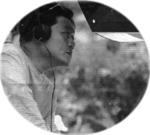|
Films
Soltera
Deathrow
Kailangan Ko'y Ikaw
Anak
Biyaheng Langit
Laro sa Baga
Gusto Ko Nang Lumigaya
Tuhog
Directors
Jerry Lopez Sineneng
Joel Lamangan
Joyce Bernal
Rory Quintos
Tikoy Aguiluz
Chito Roño
Maryo J. de los Reyes
Jeffrey Jeturian
CinemaLibre Schedule
Philippine Movie Database
Film Archives and Library
Home
Be a member of the
CinemaLibre Film Society -
your passport to the film art
of the global village.
Past schedules

|
Chito S. Roño had his initial training in film at the UP Film Center. He was among the first batch of enrollees in Cinematic Arts—the first film course introduced in the premier state university and pioneered by UP Film Center. He majored in broadcasting and engaged in substantial theater work in college prior to further studies at the New York School for Social Research. He took up scriptwriting at the Grey Film Atelier in Upstate New York and cinematography at Centro Statale di Cinematografia e Film in Rome. He received wide acclaim for his debut film, Private Show (1986), which created a stir when it was chosen as the Philippine entry to the Chicago International Film Festival. He also won the local critics’ group’s award (Urian) and that of the entertainment press (Star) as best director for Itanong Mo sa Buwan (Ask The Moon, 1988). His socially relevant film on residents of Subic—once host to the US naval base—Olongapo, The Great American Dream (1987), was adjudged Grand Winner for Best Picture at the 13th Metro Manila Film Festival. The revival of Manila Film Festival in 1991 brought another round of honors to Chito when his entry, Kailan Ka Magiging Akin, bagged the lion’s share of awards. It was his first and last participation in the said filmfest staged in commemoration of the Philippine capital’s founding. Its expanded version, the Metro Manila Film Festival, has seen more action for Chito. In all instances, he scored victory. In 1995, he entered Dahas which was proclaimed 2nd Best Picture. In 1997, he fielded Nasaan ang Puso which turned out to be the runaway winner in the eight major categories including the top plum. His entry to the 24th edition of the local filmfest, Babae sa Bintana (1998), was declared 2nd Best Picture. Chito’s festival participation is no less limited to the domestic arena. From the time of Private Show in Chicago, Chito’s varied films have graced Berlin, Rotterdam, Hawaii, New York, San Francisco, Palm Springs, Palm Beach, Los Angeles, Atlanta, Kentucky, Hong Kong and Fukuoka. In 1998, the award-winning filmmaker made waves with the exhibition of Curacha—Ang Babaeng Walang Pahinga (Curacha—The Woman Without Rest, 1998) at the Toronto International Film Festival. It marks the third time for Chito to be represented in the famed annual film festival. He first took part in the major Canadian film event many years ago with Itanong Mo sa Buwan. In 1995, he joined the Philippine contingent with Eskapo. The Film Desk of the Young Critics Circle was first to vote another of his past works, Bata, Bata, Paano Ka Ginawa (1998), as the year’s best film. The film with the international title, Lea’s Story, went on to clinch the Best Director Prize at the 1999 Brussels International Festival for Independent Films and the Special Jury Prize at the 1999 Asia-Pacific Film Festival.

|